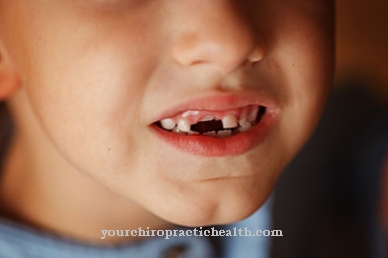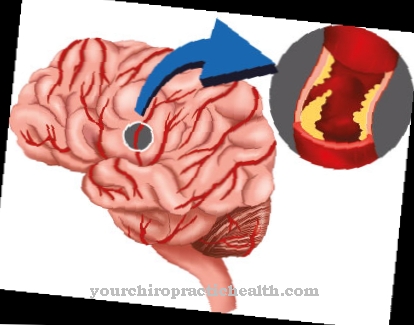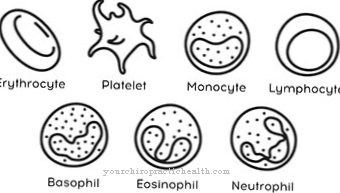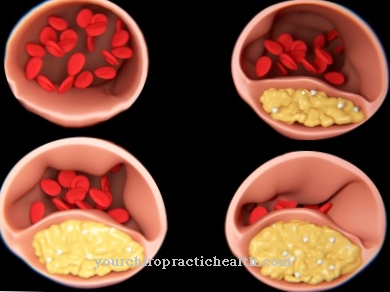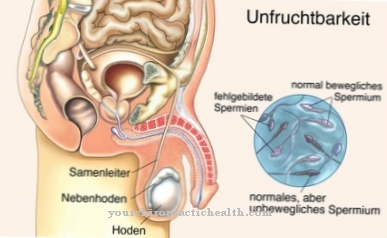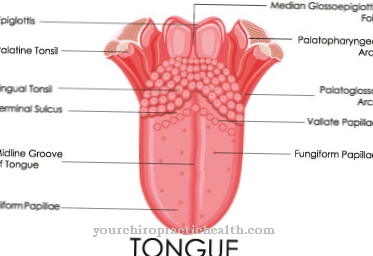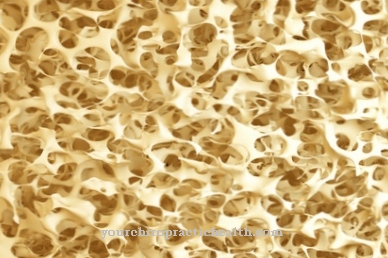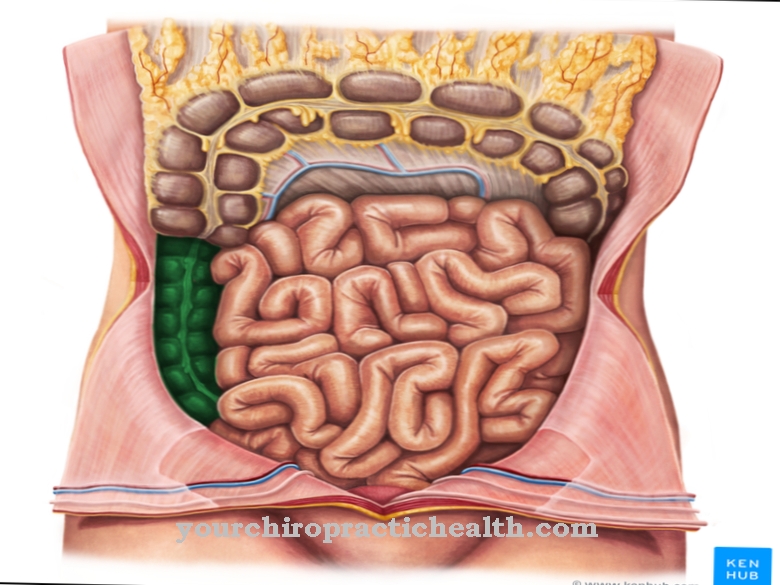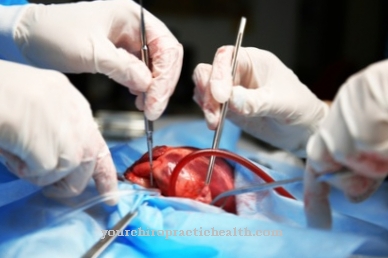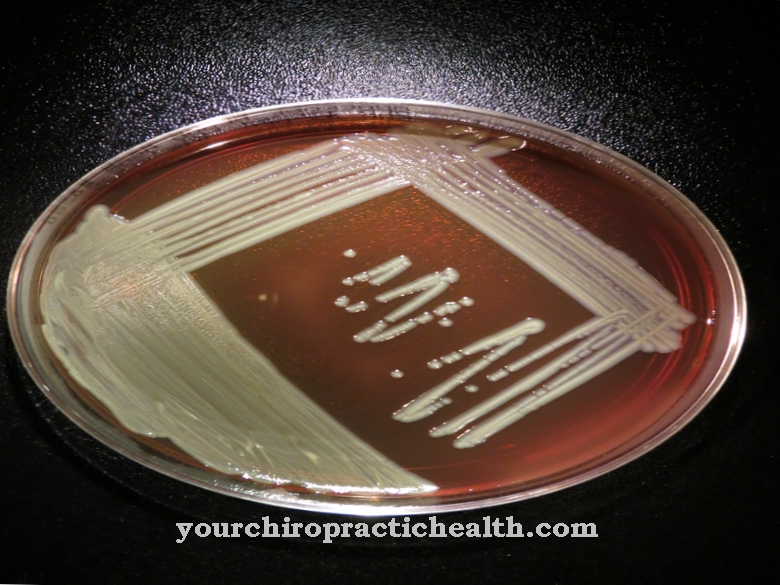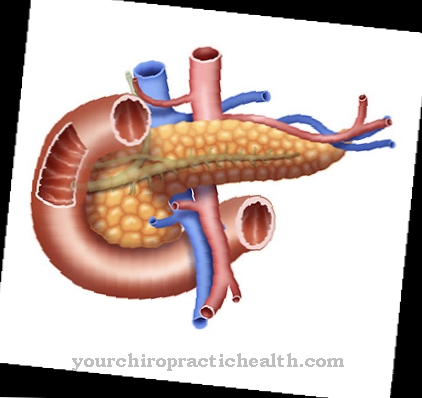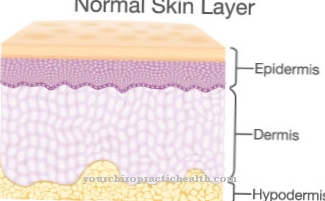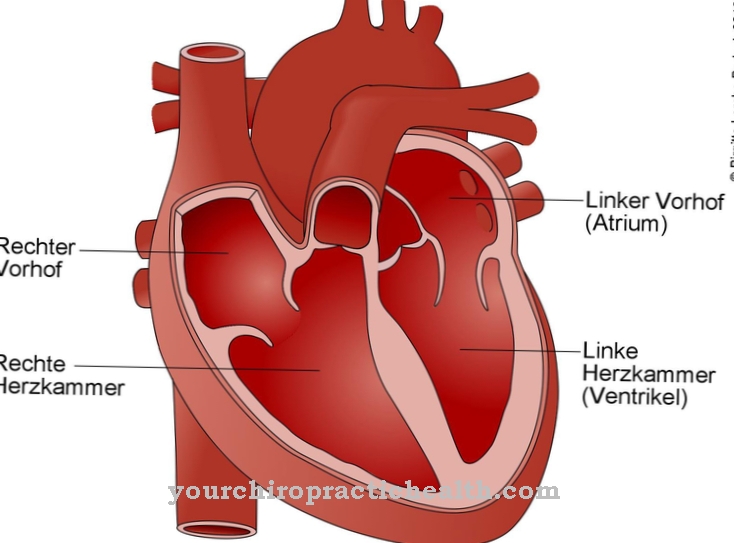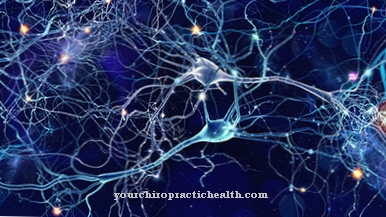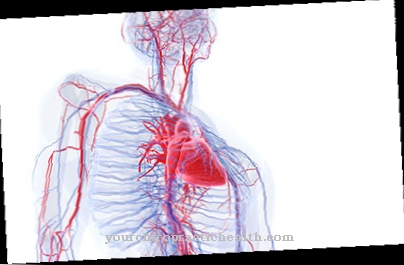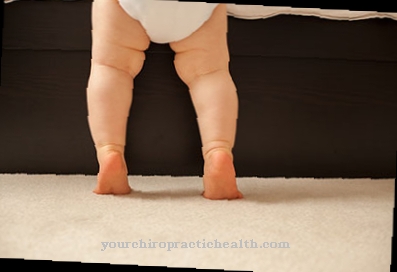The Ellis van Creveld syndrome is an extremely rare genetic disease. Short ribs and polydactyly (multiple fingers) are characteristic. Life expectancy depends on the size of the thorax and the severity of a possible heart defect.
What is Ellis Van Creveld Syndrome?

© oxanaart - stock.adobe.com
Ellis van Creveld syndrome is also known as chondroectodermal dysplasia due to the involvement of the cartilage tissue and the ectoderm. It was first described in 1940 by the two pediatricians Richard Ellis and Simon van Creveld. It belongs to a group of diseases that are known as short rib polydactyly syndrome (SRPS for Short Rib Polydactyly Syndrome).
These syndromes are characterized by short ribs and underdeveloped lungs. All diseases in this group are genetic and are inherited as an autosomal recessive trait. The same is true of Ellis van Creveld syndrome. The course of these diseases is often fatal. Ellis van Creveld syndrome is an extremely rare condition. The worldwide incidence in newborns is estimated at 1 in 60,000 to 1 in 200,000.
A total of only 150 cases were described. It is a little more common in some communities. The Aborigines in Western Australia and Amish in Lancaster County are more often diagnosed with Ellis van Creveld syndrome. It has been estimated that the incidence among Amish people in Lancaster County is 1 in 5,000 per newborn. According to the latest findings, Ellis-van-Creveld syndrome, along with some other related syndromes, is one of the so-called ciliopathies.
causes
Ellis van Creveld syndrome is a hereditary disease that is inherited as an autosomal recessive trait. Presumably, however, several genetic defects can lead to the onset of this disease. It was found that at least two genes on the short arm of chromosome 4 can be involved. These are the genes EVC1 and EVC2. Both genes are next to each other on chromosome 4 and probably have similar regulatory tasks.
In some cases of the disease, the same mutated EVC genes were passed on homozygously from both parents. In other cases, however, the child received both a mutated EVC1 and a mutated EVC2 from the parents. However, all children developed the same symptoms. Since only one mutated gene was found in individual people, it is assumed that there must be more hereditary factors.
Both EVC genes are not only next to each other on chromosome 4, but also share a common promoter region. This already suggests that both genes are involved in similar processes. The disease is usually caused by an incorrectly set start codon. This results in a later start or a premature termination of protein synthesis, resulting in a polypeptide chain that is too short.
However, there are also other mutations in both genes that are inherited in an autosomal dominant manner even if they are passed on in heterozygous form. This applies, for example, to Weyers syndrome, which is characterized by bone formation disorders in the hands and face. Overall, in the case of Ellis van Creveld syndrome and related diseases, complex genetics must be assumed, in which further mutations can be involved.
Symptoms, ailments & signs
The Ellis-van-Creveld syndrome is characterized by short stature, polydactyly (many fingers), short ribs, underactive lung and congenital heart defects. The fingernails and teeth are dysplastic. Patients usually have six fingers on their hands, with the additional finger next to the digitus mimimus (little finger) facing outwards. In about 10 percent of cases, there are also excess toes on the feet.
However, there is often a greater gap between the big toe and the second toe. The limbs are shortened. Cleft palates and prenatal tooth eruptions are also occasionally observed. Around 60 percent of those affected have a congenital heart defect. Usually this is an atrial septal defect. However, motor and mental development is not impaired.
Already prenatally, deformities such as the shortening of the long bones, heart defects and six-fingered fingers can be detected by ultrasound examinations. The narrow thorax causes major breathing problems in newborns. Overall, the symptoms of Ellis-van-Creveld syndrome are different. The prognosis of the disease depends on the severity of the lung and heart malformations and the therapeutic measures taken.
diagnosis
Ellis van Creveld syndrome can be diagnosed prenatally through ultrasound examinations. However, it must be differentiated from several syndromes such as Jeune syndrome, Verma-Naumoff syndrome, Weyers syndrome and McKusick-Kaufman syndrome in the differential diagnosis. Only a genetic test for EVC1 and EVC2 offers a reliable diagnosis.
Complications
Most patients with Ellis-van-Creveld syndrome have multiple fingers and short ribs. In many patients, the syndrome also leads to short stature and malformations of the teeth and fingernails. The malformations often lead to psychological problems and reduced self-esteem.
The person concerned often suffers from bullying. About half of all sick people develop a heart defect. This heart defect can negatively affect life expectancy in Ellis van Creveld syndrome. However, the syndrome does not affect the child's mental and physical development, so thinking is not restricted. If the person has a narrow chest, it can cause breathing difficulties.
There is no cure for Ellis van Creveld syndrome, which is why only symptom relief is possible. In most cases, treatment is limited to correcting the heart defect and breathing difficulties. Whether this leads to a reduced life expectancy depends largely on the extent of the heart defect. However, the person concerned is restricted in his everyday life and cannot perform any physically strenuous activities.
When should you go to the doctor?
In most cases, Ellis-van-Crefeld syndrome can be diagnosed right before birth or shortly after birth, so that an additional diagnosis is usually no longer necessary. However, those affected suffer from a heart defect due to the syndrome, so this must be corrected quickly. The further course of the disease and life expectancy depend heavily on the severity of the heart defect.
A doctor should be consulted if the child suffers from short stature and multiple fingers. In addition, with Ellis van Crefeld syndrome, regular cardiac examinations are necessary to avoid sudden cardiac death.
A visit to a cardiologist is necessary for this. At a very young age, the syndrome should be treated by a pediatrician. A doctor should also be consulted if the child or the parents suffer from psychological problems or depression. Furthermore, the Ellis van Crefeld syndrome can lead to breathing difficulties, so that a visit to a doctor is necessary here too.
Doctors & therapists in your area
Treatment & Therapy
A causal therapy for Ellis-van-Creveld syndrome is not possible because it is a hereditary disease. However, symptomatic treatment must be given immediately after birth to limit the effects of the narrowed thorax and possible heart defect. It is particularly important to master the breathing problems caused by the narrow thorax. The heart defect requires regular monitoring.
The bone deformations must also be checked by an orthopedic surgeon in order to be able to intervene if necessary. In addition, constant dental care is necessary. Overall, the prognosis of the disease depends on the breathing status in the first months of life and the severity of the heart defect. Adult height cannot be predicted.
Outlook & forecast
The prognosis of the Ellis-van-Creveld syndrome is largely determined by the therapy in the first months of life. In the beginning, the lung hypofunction is the most important factor for a reduction in life expectancy. There is considerable shortness of breath, which requires immediate intensive therapy.
If the disease is successfully treated in this phase, the extent of the heart defect also plays a major role in life expectancy.With successful therapy of these two limiting factors, the patient can definitely reach a normal age. However, there is still little statistical experience on this because this disease is so rare.
It is a hereditary disease that leads to a variety of dysmorphisms and cannot be cured. Another concern of therapy is to improve the patient's quality of life. Orthopedic measures are used to try to limit the deformation of the bones. Intensive dental care is also necessary.
Those affected suffer from multiple restrictions and external deformities, which can also lead to psychological problems. Leaving patients alone can lead to depression and suicidal ideation. As a result, complete social exclusion is possible. Psychotherapeutic care should therefore not be missing in the overall concept of therapy. Due to the rarity of the disease, no conclusive statistical statements can yet be made regarding the success of therapy to improve quality of life.
prevention
Ellis van Creveld syndrome cannot be prevented. If Ellis-van-Creveld syndrome has been diagnosed in the family, genetic counseling should be used to assess the risk to the offspring. Due to the autosomal recessive inheritance and the rarity of the mutation, it can be assumed that the risk is very low.
You can do that yourself
Self-help opportunities are very limited for patients with Ellis-van-Creveld syndrome. Despite all efforts, a cure is not to be expected. With its self-healing powers, it is not possible for the human organism to cure the disease or to alleviate the symptoms.
In everyday life it is about finding a way to achieve a good quality of life with the disease. Often the patient's life expectancy is shortened. The family members should plan their life and structure their time together accordingly. At the same time, it is important to build a lifestyle that corresponds as closely as possible to a normal life.
When it comes to illness, it is important to provide psychological support for the patient and close relatives. In this situation, everyone involved needs individual assistance. In addition to professional help, joint discussions and exchanges within self-help groups can be experienced as enriching and beneficial for overcoming everyday challenges. The patient's self-confidence should be built through positive experiences. Leisure activities help to promote the strengths of the person concerned and to develop joie de vivre.
Relaxation techniques help to reduce stress and build up mental reserves. Different methods are offered in all age groups to develop an inner balance.

